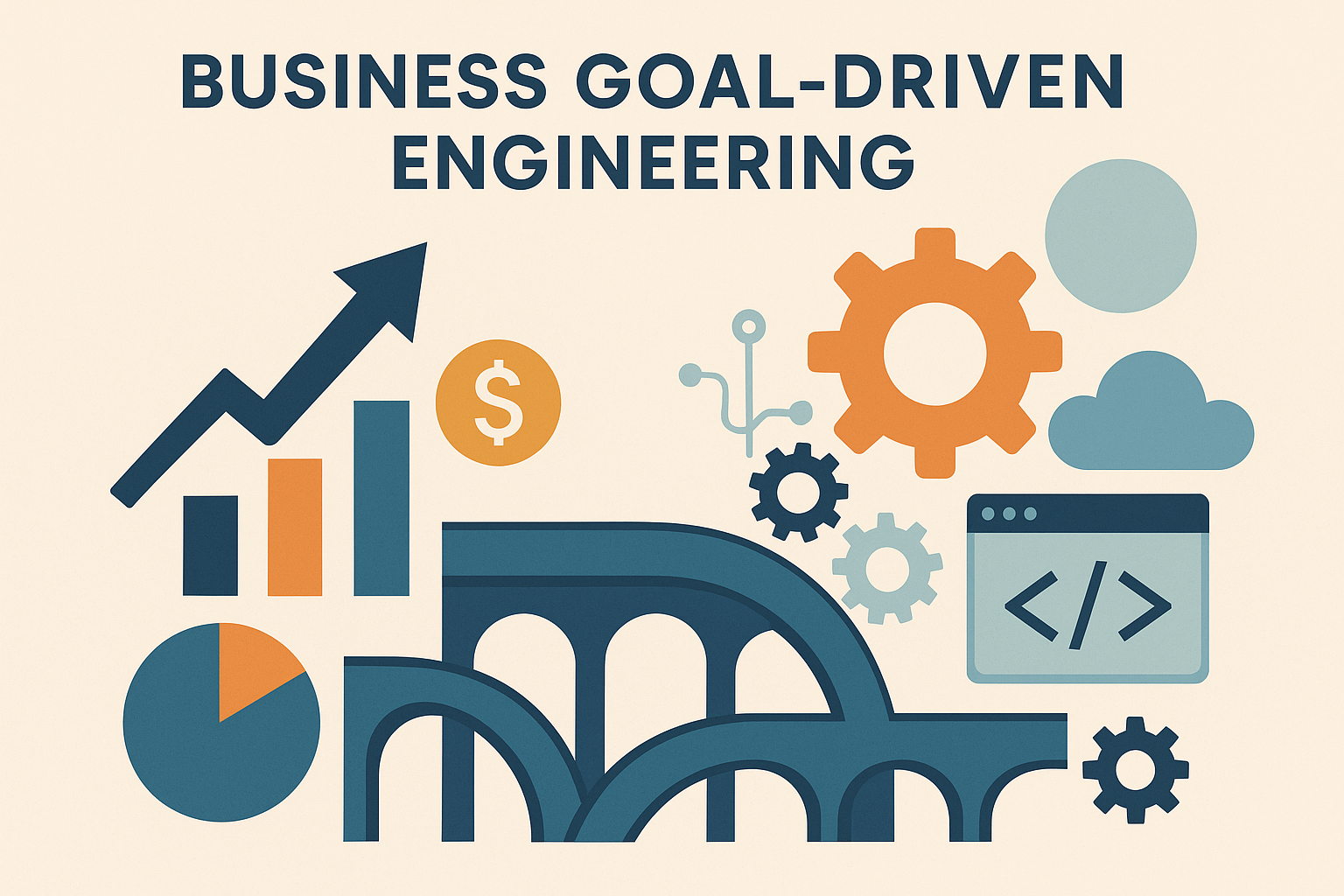In the agile universe, we constantly translate business needs into actionable work. Traditionally, this process unfolds through a clear hierarchy: Epics break down into Spikes, Spikes further unfold into Stories and (Sub-)Tasks. Each step refines abstraction into tangible work packages, providing engineering teams clarity and structure. Yet, solely relying on Epics and Stories to articulate business intent carries inherent limitations, often leaving gaps between technical teams and stakeholders.
Epics and Stories naturally embody a detailed narrative—a roadmap defined primarily from a “ground-up” perspective, detailing the “what” and “how.” While thorough, this bottom-up approach can obscure the broader purpose, causing stakeholders to feel disconnected amidst technical detail, uncertain about the ultimate business value.
This is where goals—clear, outcome-oriented statements aligned directly to business objectives—come into play. Goals articulate the “why,” offering context and intention that anchor and sometimes stretch beyond Epics and Stories into strategic relevance. Crucially, goals can selectively reach into and even cherry-pick specific Stories or Tasks from within Epics, ensuring precise alignment with the desired business outcome.
Introducing goals atop the agile structure creates a communication bridge that clearly links strategic intent to technical execution. Stakeholders quickly grasp the business value, seeing explicitly how certain stories or tasks directly contribute to strategic priorities.
For engineering teams, goals provide a broader view of their work’s impact. Rather than becoming solely task-oriented, engineers develop a strategic awareness, seeing their technical contributions directly tied to measurable business success. Importantly, this approach does not disrupt the essential drill-down approach vital to agile execution but enhances it by clearly tying each task back to well-defined business outcomes.
Practically, agile and scrum metrics remain untouched, maintaining their critical role in measuring efficiency and delivery effectiveness. Goals introduce an additional layer focused explicitly on business outcomes—customer satisfaction, revenue growth, market impact. This dual-layered approach boosts transparency and accountability, enriching communication and fostering strategic alignment throughout the organization.
In essence, by integrating clearly defined goals that strategically stretch and target specific stories and tasks within Epics, agile teams move beyond mere task management. They establish a powerful ecosystem where strategic clarity meets engineering precision, driving both innovative excellence and measurable business success.
This way of working works well in R&D oriented organisations, where direct client feedback is not present for every LoC that needs to be generated.
